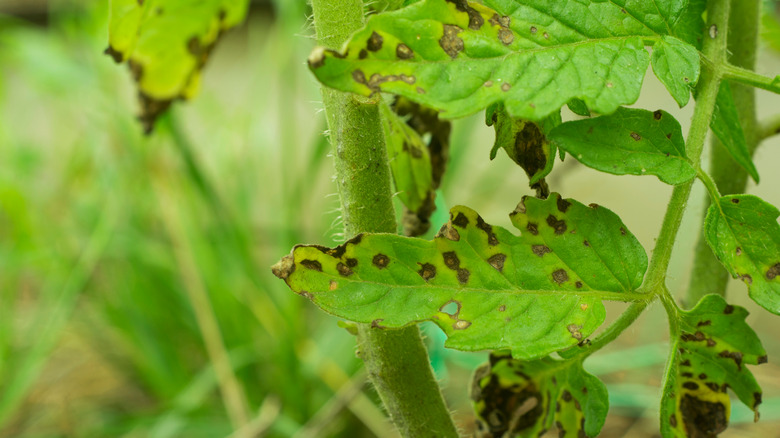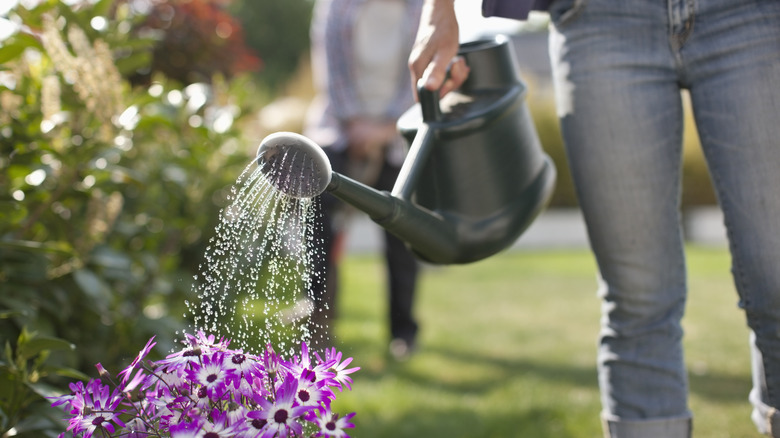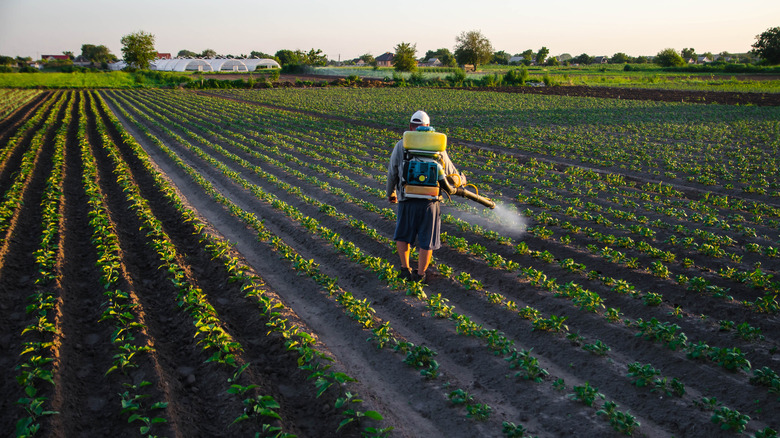Plant Rescue: What Rust On Tomatoes Looks Like And How To Save It
Anthracnose, a term used to loosely describe a group of fungal diseases that typically cause dark lesions on leaves, is a common problem for tomato plants and other leafy greens grown in gardens. Almanac reports that rust disease typically won't kill them, but can quickly spread after watering or during rainy months. Rust is a fungal infection that will diminish the health and productivity of any impacted plant. This means your tomato plants and other garden delights won't produce as many fruits or vegetables as you would otherwise expect.
Of course, this is a significant issue for those involved in agriculture. Whether you're a bona fide farmer who sells your yearly harvest to other suppliers or at the local farmers market, or simply a homeowner who wants to supplement the pantry, rust disease can put a significant dent in your output. Plus, it's hard to treat, so many people involved in growing plants tackle it as a preventative measure rather than relying heavily on future remedies.
Planet Natural reports that it will overwinter with your plants if you allow it to survive on the leaves. Therefore, cutting your affected plants to ground level can stop rust disease in its tracks. But this solution isn't short-term, and other strategies must come into play as well.
Rust disease is found most commonly in moist conditions
The Royal Horticultural Society explains that rust disease is most prevalent in moist or otherwise wet conditions and is among the most common fungal infections found in garden plants. Irrigating anything that has been adversely impacted can lead to the spread of the fungus from one plant to another, potentially increasing the volume of affected vegetation in your garden. Water also helps transport the fungal spores of the disease. Thus, being exceedingly careful when watering plants should be a priority for homeowners and professional farmers alike.
It's also critical to think about strategies to move excess water away from any plants. After heavy rain, drainage will always be important to any planting approach. Ensuring your soil has ample drainage and that you aren't soaking any leaves when watering can help prevent the start and spread of rust disease on your tomatoes and any other plants in your garden that may be susceptible to infection.
A simple fungicide can help clear away the problem
It can be difficult to deal with rust disease in your garden. In fact, there aren't really any optimum strategies for eradicating it altogether in the short term. However, Garden Guides explains that a fungicide can help keep it under control during harvest season. Dealing with rust is more of an exercise in management than anything else. As noted above, when winter rolls around, you can overwinter your plants by cutting off the vast majority of aerial growth and then mulching the raised garden bed or other planting mediums that you employ.
Because this fungus lives on leaves, removing any growth is an effective strategy. However, it obviously won't work during the height of the growing season unless you intend to cull one or more plants entirely to protect the rest of your crop. Another important approach to keeping rust at bay is spacing. Making sure everything is lined up at an appropriate distance from one another will keep any contact to a minimum or eliminate the possibility of rust disease altogether. The farther away your plants are from one another, the less likely they are to transplant diseases.


